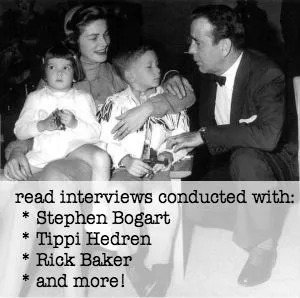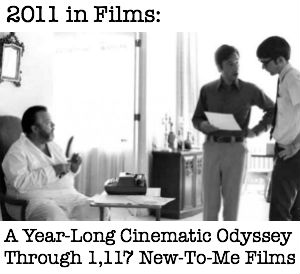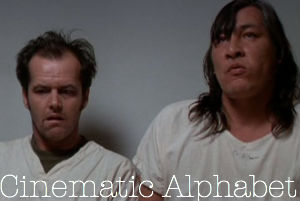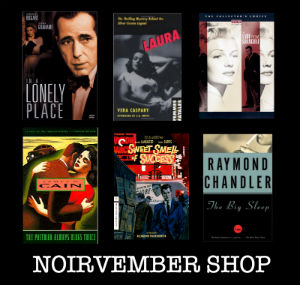Female Filmmaker Friday: Smooth Talk, 1985 (dir. Joyce Chopra)
Joyce Chopra’s Smooth Talk first came on my radar when I was doing A Year With Women, but I couldn’t find it for rent anywhere online so I didn’t watch it that year. Last year I found it at Videodrome here in Atlanta and I finally got to give it a go. I’m not sure what I expected, but this film was not like anything I’d seen before. It’s a masterful adult fairytale about the confusion of teengirldom and the darkness that can lurk in men. On the surface the film’s plot could sound like it is anti-sex, but that’s distinctly not the case. The film is based on Joyce Carol Oates’s 1966 short story “Where Are You Going, Where Have You Been?”, which itself was inspired by a real life serial killer Charles Schmid, known as The Pied Piper of Tucson because he targeted teenage girls. There will be some spoilers after the cut.

Joyce Chopra, who did not go to film school and has a degree in Comparative Literature from Brandeis (I was also a Comp Lit major, so I’m always happy when I find another person who studied what I studied), first worked as an editor before starting her career as a documentary filmmaker. Her first major work was the 1972 autobiographical short documentary Joyce at 34, where she tackled her own feelings about career versus motherhood. Smooth Talk was her first feature film, with the screenplay adaptation by her husband Tom Cole. She made one more theatrically released feature, The Lemon Sisters (’89), before mostly turning to made for television films (of which she has made over a dozen.) Smooth Talk won the Grand Jury Prize at the 1986 Sundance Film Festival (although it had made its premiere at the 1985 Toronto Film Festival and had already been released theatrically in the United State in November of 1985).

Chopra and Cole added meat to the film by fleshing out the domestic aspects of the story. Laura Dern plays Connie, a 15-year-old girl who would rather spend her summer painting her nails, lounging, and hanging out at the mall than helping her family with chores. Her mother Katherine, played with ferocity by Mary Kay Place, can only see the laziness of her daughter, not the not-a-girl-not-yet-a-woman confusion she is going through. It’s implied that Katherine had Connie’s older sister June (Elizabeth Berridge) when she was a teenager (which would explain the nearly 12-year gap between the sisters). The family tension is not helped by Connie’s father Harry (Levon Helm), who appears to be in a similar daze to Connie, barely looking anyone in the eye whenever asked a question.

Connie spends a lot of her time listening to music (James Taylor was the music producer on the film), which is a common teenage habit that seems to always irk parents. This scene in particular is fascinating as it shows her mother watching Connie as she dances carefree, a happy smile on her face. As soon as her mother enters Connie remembers where she is and her body language changes. She loses some of her carefree wonder.

These two are at that age where they are always at each other’s throats. Connie may be self-centered (who isn’t at that age?), but it doesn’t help that her mother is always picking at her. At one point she says to her that when she looks at Connie all she sees are “trashy daydreams.” It’s a very hurtful moment. The tension between them is the tension of growing up. Connie is setting boundaries for her body – including shrugging off an unwanted hug from her mother – just as her body is beginning to change into womanhood. Her mother meanwhile continues to treat Connie’s body as a curse, as something that should be kept hidden. She treats Connie as something dirty as if she had a choice in her own adolescence and burgeoning hormones.

Laura Dern is a wonder to behold in this movie. She was 19 when it was made – and was cast just two weeks before the film started shooting. She imbues Connie with a rich interiority. We see the many roles Connie finds herself playing – the trashy daydreamer her mother accuses her of being, the daddy’s little girl her father still thinks of her as, the spoiled baby sister, and the girl on the verge of adolescence who is ready to own her own body.

I love this scene with Connie sunning in the yard listening to a jukebox. This reminds me of many a summer during my teenage years as well. It’s a very innocent scene, but because the bodies of teenage girls have become so sexualized in our culture it seems provocative. The way Chopra films it at such a distance makes us the viewers feel like voyeurs. It’s heightened when the camera pulls into an extreme close-up of Connie as she adjusts her top. This voyeurism is felt throughout the film, not just by the audience, but in the way characters view Connie, often without her consent.

In an interview in the Washington Post, Chopra shared this gem about researching mall culture (at its height in the mid-80s):
We also interviewed some 15-year-old girls and asked them . . . how could they shop all day without being bored? And, of course, they said we don’t shop. We scope guys. They described to us what we put into practice. They go to the mall, they get bored, they all want something to happen and they pick out a guy, and track him all day through the mall.
A big point of contention between Connie and her mother is how many hours she spends at the mall. What we come to see later is that the mall was probably the safest place Connie could be spending her time.

There are a lot of scenes of Connie looking into mirrors. While this could be called vain, it makes for an interesting counterpoint to all the voyeurism in the film. Connie is exploring her own self-image as she begins to explore her body. Why is it vain for her to learn about herself when so many others gaze at her for far more nefarious purposes?

We discover that Connie and her friends have been sneaking off to a local hamburger joint to pick up boys. In another interview Chopra discusses how as a teenager she felt as if all her friends were virgins and she was always anxious to just get it over with. This is where Connie is at. She’s a virgin on the verge of adolescence with hormones raging. This film’s frank portrayal of the girls being just as horny as the boys is revelatory considering the lack of agency most teen girls had in movies made around this time (save Benny (Kate Vernon) in Pretty in Pink who may be a huge classist bitch, but they allow her some very refreshing sexual agency in that film). Here’s where the film could have veered into a cautionary tale about promiscuity and place blame on the girls. It does no such thing. Rather, it shows a willing Connie attempt to explore her sexuality with a boy about her age, only to discover that when she decides she needs to stop the boy clearly doesn’t understand how consent works. Obviously, this is still an issue we’re dealing with today. This is a film that allows its character to both want to explore her sexuality and also allows her enough agency to know when she’s feeling safe and she’s not.

Prior to her mishap with the teenage boy, we get our first glimpse at Treat Williams’s character. He is a voyeur, staring at Connie through the glass of the restaurant’s windows. It’s staged similarly to the scene where Connie’s mom watches her dancing to music. In both cases Connie has no idea she is being watched. In both cases Connie’s body is being scrutinized without her consent.

As Connie heads off for an ill-advised tryst with the teenage boy she’s picked up at the diner, she sees the man who’s been watching her for the first time. He’s got what I like to call a shit-eating grin. He’s smooth. He’s charming. He’s terrifying. Connie notices him noticing her and at first likes the attention. She’s charmed by his smile and easy James Dean-esque charm. But then he utters “I’m watching you!” It’s menacing indeed, and Connie, perhaps for the first time, feels the weight of it is to be watched without one’s consent.

This is where the film takes a large tonal shift. After Connie flees from the teen boy who really needs a lesson in consent, she’s even more sullen at home than she had been before. After deciding to stay home alone rather than go to a barbecue with her family, the man from the diner arrives. He introduces himself as Arnold Friend – a friend. He calls to her from his car to come out of her house and talk to him. Connie is cautious, but curious. She is Red Riding Hood and he is clearly the Big Bad Wolf. Chopra said of this scene:
“Arnold really does not want to come into that house. He wants to get her out through the force of his person. That scene could also be described as a scene about power. I think his moment of climax comes when she walks out the screen door of her own volition.”
This sequence of the film is utterly terrifying as it almost feels like a home invasion. A. Friend is not alone in his car; it is two grown men against one 15-year-old girl. Connie should know better, but her curiosity gets the better of her – as does the man’s, ahem, smooth talk. He assures her he’s not much older than her. He complements her. He showers her with all the positive affirmations that she has not heard from others – or even herself – in far too long.

Which brings us to one of the most tense parts of the film. Connie retreats back to her house, her suspicions finally winning over her curiosity and hormones. A. Friend then begins to talk overtly sexually to her saying he is “her lover,” even though she may not know what that means yet. It’s a tense, terrifying sequence.

While she is safely in her home, there is just a thin screen between Connie and this man (not to mention the second one, still waiting in the car). Connie is trapped.

This scene was psychologically hard for Dern, but she stated having a female director helped her with it. She told the Washington Post, “Part of our bond is that we are both female. In Smooth Talk, where the story is so central, she understood it so much better . . . A male director might know how to direct me as well, but he wouldn’t understand me so well.”

The rest of this sequence is shot like a thriller. Connie flees into the house, hiding in shadows. While some might interpret the latter half of the film as punishment for Connie’s flirtatious behavior in the first half, I think that is far too simplistic. The onus from the get-go is squarely on the behavior of others. Connie is not nurtured by her mother or sister – she is censured. She has not been given any guideposts to help her navigate adolescence beyond pop culture – and especially the pop songs she listens to. She has agency and makes her own decisions about her body – until she is denied that agency by the men who push past her consent as if her just being alive is consent enough for them to do what they want with her.

The film ends on an ambiguous note, though I’m in the camp that thinks Connie was raped. However you interpret the ending, one thing is clear: she is not the same carefree girl she was at the start of the film. Connie dances to the song “Handy Man” by James Taylor a few times throughout the film and each time the lyrics get a little more sinister. Many of us have had that revelation where we listen to the lyrics of a pop song we loved to dance to as kids, only to really hear them as an adult. That’s what growing up is; adding layers of understanding through experience to things we thought we knew.
Posted on January 25, 2019, in Female Filmmaker Friday and tagged Female Filmmaker Friday, Joyce Carol Oates, Joyce Chopra, Laure Dern, Levon Helm, Mary Kay Place, Tom Cole, Treat Williams, Where Are You Going Where Have You Been?. Bookmark the permalink. 1 Comment.

















Your analysis was simply spot on.